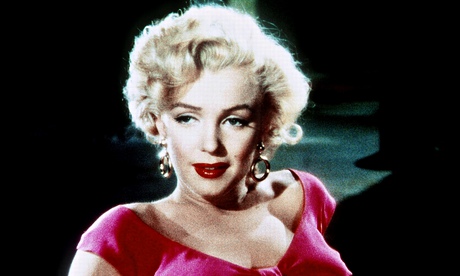
Max Factor has appointed Marilyn Monroe as its new “global ambassador”, leaving some people bemused at the idea of selecting an ambassador who has been dead since 1962. They seem to suspect this might limit her diplomatic utility. But Monroe represents just what Max Factor wants to resuscitate: the glamour for which the company was once a byword.
In the era of classic Hollywood (about 1920-1965), Max Factor ran the only cosmetic game in town, pioneering the use of makeup for cinema, and then, with his sons, adapting and selling those products commercially. Monroe remains one of the most iconic Hollywood movie stars, and Max Factor’s spokeswoman said they chose her because she epitomises their history.
“Marilyn made the sultry red lip, creamy skin and dramatically lined eyes the most famous beauty look of the 1940s, and it’s a look that continues to dominate the beauty and fashion industry. It is the ultimate look that defines glamour – nothing else compares,” the spokeswoman said.
The campaign will emphasise Monroe’s metamorphosis, it was reported this week, from “mousey” Norma Jeane Mortenson to glamorous Marilyn Monroe, a decision that seems, at face value, rather canny. Certainly it has stirred up a bit of welcome publicity around the campaign, which claims in particular that it was Max Factor Jr’s idea to bleach the star’s naturally chestnut hair to that famous platinum blonde. The ad campaign reads: “From Norma Jeane to Marilyn Monroe. Created By Max Factor.” Hang on, boys. Created by whom?
If Max Factor wants to emphasise history it should start by paying a little more attention to it. Monroe had her first – tiny – film role in 1947; she did not have her first starring role until 1952. Throughout the 1940s, she was still “mousey” Norma Jeane. For my book on Monroe, I read every major biography then published, as well as many ancillary accounts – about 300 books in all. Not one reported that Max Factor suggested the aspiring starlet should bleach her hair. I don’t think any of them mentioned Max Factor at all. Instead, nearly all credit a woman named Emmeline Snively, the head of Monroe’s first modelling agency, with whom she signed in 1945.
Snively gave Marilyn lessons in fashion, lighting and grooming, and, most biographers report, recommended that she lighten her hair, “because a blonde could be photographed in any wardrobe and in any light”. By 1946 the model Norma Jeane had appeared on 33 magazine covers – quite a feat for a “mousey” young woman waiting to be created by Max Factor.
Marilyn Monroe was not created by Max Factor – or by her studio head, Darryl F Zanuck (who hated her); or by her agent, Johnny Hyde, who paid for her to have minor plastic surgery (to the tip of her nose and her jawline) and got her first big roles; or by any of her directors, or husbands, or any other of a legion of men, and a handful of women, who have tried to claim the credit, now including Max Factor’s heirs. She was not created by makeup, in any sense: cosmetics were not sufficient to create Marilyn Monroe, and neither were other people. Emmeline Snively herself said that what distinguished the girl she knew was how hard she worked: “She wanted to learn, wanted to be somebody, more than anybody I ever saw before in my life.”
Everyone from Elton John to Joyce Carol Oates (who should know better) has trotted out this tenacious, tiresome story: “ordinary” Norma Jeane was changed by someone else into the glamorous movie star Marilyn Monroe. But Norma Jeane Baker, as she was known in childhood (Mortenson was the name on her birth certificate, but she never knew her father), was always an extremely beautiful girl.
An army photographer discovered her when she was 19, working at a munitions factory. She went on to be a popular model on the cover of dozens of magazines before she bleached her hair or focused her look. There was never anything “mousey” about this woman, and when she changed her hair, her makeup, and her name, she didn’t become a different person. She created an iconic style, which she developed in collaboration with her personal makeup artist for many years, Whitey Snyder.
No doubt Marilyn attended the Max Factor beauty salon near Hollywood Boulevard in the 1940s, along with hundreds of other young starlets. I have no reason to disbelieve that she may have worked with Max Factor Jr himself in the 1950s, once she was famous. But no one except Marilyn Monroe created Marilyn Monroe, and in 2015 it’s past time for us to give credit to the woman who earned it.

